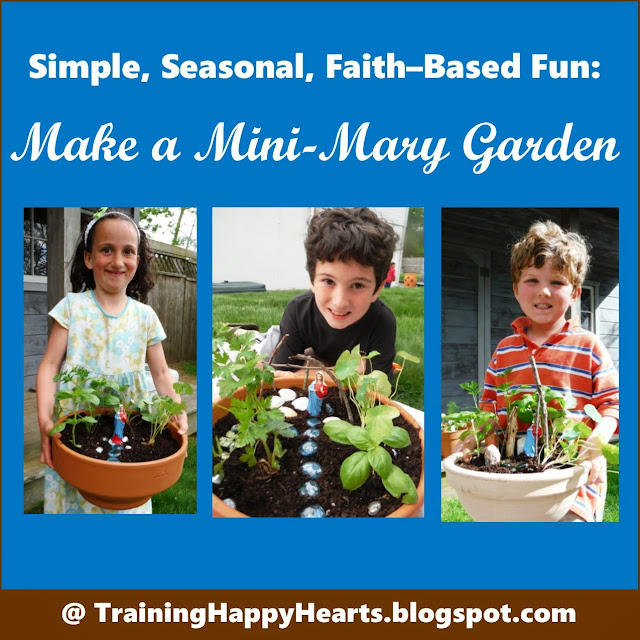When we were offered an opportunity to review the Complete Home Learning Suite by Essential Skills Advantage (ESA), I was on the fence about whether or not to accept it. I had heard positive things about ESA and appreciate that they are not aligned to the Common Core like so many other curriculum providers out there. However, I was not sure I wanted to commit to yet another thing that would require my children and I to be home to use. For we own no portable internet-ready devices and, thus, any time that we use online programs, we must be at home - a place that, oddly, even though we are homeschoolers, we are absent from quite regularly.
In the end, though, I decided that ESA could be helpful in our situation. Since we are often out and about immersing ourselves in experiential learning, clubs, co-ops, and such, when we are at home, I like to be able to open-and-go with much of our skill work. Further, I find it helpful to have things on hand that will engage one or more of my children in independent learning while I work with another. ESA promised just that. The children could log in and learn on their own without fuss.
What Is ESA?
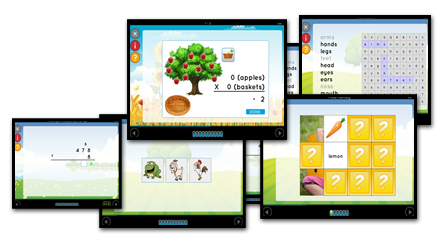
In a nutshell, ESA is a supplementary learning program for elementary aged children that provides online streaming activities for:
- Reading at K-6 levels through Phonics work and Reading Comprehension
- Spelling at Grades 1-6 levels through "Fun with Spelling" and "Spelling Stumpers"
-
Language & Grammar at Grades 3-6 levels with Creative Writing, Grammar, Vocabulary, and Writing Fundamentals
- Math at Grades K-6 levels with Complete Math, Operations, and Concepts
- Science at Grades K-3 levels with Earth & Space, Life, and Physical Sciences
-
Geography at Grades 3-5 levels with American & Canadian Geography, Map & Globe Skills, and World Geography
Each time students log in, they can choose which subjects and levels they would like to work at in order to progress at their own pace. As they do, a "Marks Manager" feature tracks their progress for parents so that parents can easily view which activities students have completed, what scores they have been getting, etc. Parents can also print certificates for completed units if they wish. Thus, the program offers flexibility and accountability.
Our ESA Experience

For
our review, I was given a one-year online subscription for two
students. My plan was to have my daughter and oldest son use the
program independently to work on skills in 15 minute increments at least
three days a week when we were home.
Well, you know what they
say: "Life is what happens when you are making other plans."
While we did use the program regularly, as things turned out, one of my
children could not use it independently, and the other often pushed his 15-minute increment longer.

My
daughter was excited to try the program, but was quickly crestfallen when
she realized "how hard" it was. She is not a strong reader and
got frustrated right away by "all the reading" that was required even at lower
levels of the program "even with math". In all
honesty, there was not that much reading, but my daughter is quite a reluctant reader, and I
had mistakenly built ESA up as something she could do all by herself,
not realizing that there is not an audio feature that reads every word of text to
students. (There are some parts that are read, but not all.) So, right
away, my daughter became disappointed
My daughter did plug along
with ESA, however, using the program with help from her big brother, dad, or me.
Still, she never took to it. She said:
It's
just not my style. It's online, and I prefer offline games or short
online things... And I do not like things that say, "good job" and make sounds after
each thing. It's just too much for me. The sounds bother my ears. I
don't really want to keep using it, but people who don't mind sounds and
sitting at a computer might like it.
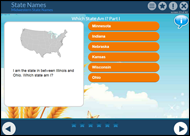
My son, on the other hand has had more success with the program. He used it completely independently and told me he'd write my review. LOL.
Here's what my ten-year-old had to say:
ESA has most subjects people study, such as Reading, Math, Language, Science, and Geography. It is an online program. You can choose what subject and level you want to study.
My mom asked me to do Math and Language with ESA. They were pretty much the same as most other Math and Language things, except you don't have to write. You only have to type. Just typing makes it a little better to do Math and Language, but I still dislike the subjects, so I was not interested in that part of ESA.
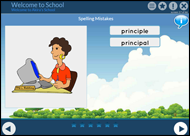
I was interested in other parts of ESA. My favorite ESA subjects are Geography and Science. They are easier than the other subjects for me and I can actually use them, unlike the Reading part of ESA that confused me.
Geography has four smaller subjects - Maps and Globes, Canadian Geography, U.S. Geography, and World Geography. I have tried all of these, but not in every grade level available. Right now, I am using Maps and Globes, but the others are good, too. (Canadian Geography is hard for me though, because I am from the U.S.A.) I like how the geography activities sometimes say, "Look at the map. Click on what you are directed to." It is easy and fun.
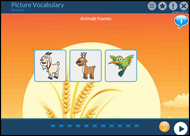
I also like Science. There are subtopics. I have used Earth and Space Science, Life Science (I think that's what is is called), and another science whose name I do not remember. Of these, I like the Living Science the best, because I know a lot about it. I am able to review easily with it.
I want to continue to use ESA, because it is fun as long as I don't have to do things I do not understand. I think the program is good for people who know a lot, but cannot always remember things, because it can help them review it.
The program does not tell you answers when you get something wrong, but it says you have not finished the lesson.
I think my son pretty much summed my feelings and thoughts up about ESA with his review.
ESA is a worthwhile program for children who like computer-based learning and need to review concepts and sharpen skills. It does not aim to teach, but rather to supplement and solidify learning through online practice. With over 14,000 lessons available at K-6 grade levels, the program can help you assess and teach your child if online learning is your child's style.
Homeschoolers, afterschoolers and school children can use the program. In fact, ESA is used by over 20,000 schools and in many homes.
Learn More
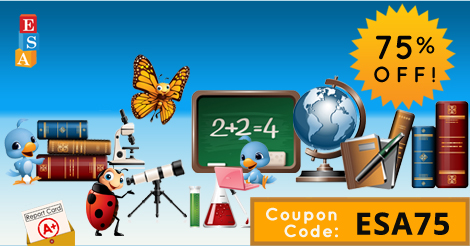
If you'd like to try ESA out this summer, you can get 75% off using coupon code ESA75.
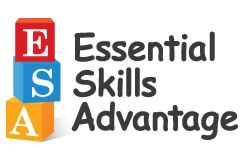
You can find ESA on Facebook, Twitter, Pinterest, Google+, LinkedIn, and on the ESA blog.

You can also find out what 100 Schoolhouse Review Crew families thought about ESA.

Yesterday, my daughter woke to a red, ripe strawberry. She was so excited.
She has been going outside every morning to check our mini-Mary gardens, hoping to find a berry before the many squirrels and other critters that visit our yard do.
I shared my daughter's joy as she discovered the first ripe berry of the season in her brand-new mini-Mary garden. She was so delighted to harvest it, show it off to her brother and Daddy, and offer to share a bit of it, despite how tiny it was. I was equally delighted that the kindness of a friend who has hosted a mini-Mary garden event for friends two years in a row brought both figurative and literal fruit to our lives.
The figurative fruit included time spent together in prayer, planting, and play with friends, as well as the practical life skill of learning to garden for my children. The literal fruit, of course, is the strawberry!
Simple preparations have made way for savored blessings!
Making This Year's Mini-Mary Gardens
{Disclosure: Some of the links below are affiliate ones. Should you click through them and make any purchase, we may receive small compensation at no extra cost to you. Thank you for supporting us as we continue Training Happy Hearts in our children and ourselves, sharing about it here.)
This year, we made our gardens exactly the same way we did last year, using:
-
parsley, basil, strawberries and nasturtium, because that is what a local nursery had in stock. (You could also use traditional Mary Garden plants.)
- 10-14 inch round pots that
are 6+ inches deep or strawberry planters. (My children used new heavy, breakable pots
purchased at a local discount shop since our pots from last year already are growing with perennial strawberry plants Some of our friends wisely replanted last year's berry plants so they could re-use the
lightweight, unbreakable 14-inch TerraBowl Planters that they purchased last year and others used pots they had empty at home.)
- small statues of Mary. (We re-used our Immaculate Heart of Mary Statue Favors which were ordered inexpensively as a twelve count last year to be split among friends. Some of our friends used other statues this year.)
- small pots and paper cups (We forgot our trowels, so we simply used little generic green pots to transfer soil. We also gave a small pot to one of the littles in our group to make a micro mini-Mary garden!)
- glass gems (which were washed up and re-used from last year.)
- shells (which, again, were re-used from last year.)
- other decorative items from nature and our craft bins.
Before making the gardens, we gathered for a faith-chat and to pray a decade plus of the rosary.
After making them, we enjoyed sunshine, play, and chatting. And, of course, since making the gardens, we've begun enjoying small harvests from them.
I dare say that making mini-Mary gardens will continue to be a beloved annual event for my children. Perhaps you'd like to take some time to begin a similar tradition before Mary's month of May ends on Tuesday. I'd love to see snapshots if you do!
This year, my children and I were introduced to the worthwhile experience of painting peg doll saints for swaps. We also have a long tradition of celebrating saint days together, often times through reading more about the lives of specific saints. So, when I heard that an Encyclopedia of Peg Saints book,
endorsed by Bishop Wall of New Mexico, had been published, I got
ultra-excited and immediately looked up more information about it.
{Disclosure: of the links which follow are affiliate
ones. Should you click through them and make any purchase, we may
receive small compensation at no extra cost to you. Thank you for
supporting us in Training Happy Hearts in our children and sharing about
it here.}
I found a hardcover version of the book ETSY and a softcover one one Amazon, and, then, decided to contact one of its authors, Maggie Jetty, to see if I might receive a review copy of the book. I was psyched that she agreed and even more delighted to discover that she and her husband Micheal, the book's other author, signed the review copy they sent me. How sweet!
My Initial Plan for Our Encyclopedia of Peg Saints
As soon as I began flipping through our review copy of the Encyclopedia of Peg Saints, I knew it was a book that I did not want my children to see right away. We had recently led a saint peg swap for children, which all my children, and especially my daughter, had been excited about. Since she wanted to host another children's swap, upon holding the Encyclopedia of Peg Saints in my hands, I immediately decided it would be perfect inspiration for her next swap and that, grouped with some new wooden pegs, a few new brushes, and some paints, the Encyclopedia of Peg Saints would make a perfect gift for my daughter's June birthday.
The birthday gift idea hatched, I tucked our copy of the Encyclopedia of Peg Saints away, planning to read it on the sly myself in order to write a review of it before wrapping it up with other bits and pieces to surprise my daughter on her birthday.
Our Plan - Take Two
My plan got foiled!
When a friend of mine and I were chatting about a Lady of Fatima event she was planning for our homeschool group, she asked me if I had any brief stories about Our Lady of Fatima that she could borrow for the event. I recalled that the Encyclopedia of Peg Saints has a Lady of Fatima page and told her that I did not have a story, but I did have a beautiful page of a book that she could share. So, I took the book out to show her.
Unfortunately, I did not get our copy of the Encyclopedia of Peg Saints tucked back away before my children saw it. Of course, they wanted to dig into the book right away, but I told them it was for something special and they could not yet dive into it. I hoped they would forget they saw it.
Fat chance!
I took our copy of the Encyclopedia of Peg Saints along to our Our Lady of Fatima celebration for my friend to use, and, although we did not end up having time to share a page of the book with everyone at the celebration, my son spied the book in my bag and began looking through it a bit. Later that week, during a quiet moment, he asked, "Mom where did you put the encyclopedia?"
"Encyclopedia?" I echoed, wondering what he was talking about. In a recent box of pass-along books, we had been given a children's dictionary, a children's thesaurus, and some how-and-why books that I had decided to keep instead of passing forward, so I thought my son might be looking for one of those. "Do you mean a different kind of reference book, Son? They are on the white shelves."
"Thanks," he replied and went to get his sought-after book from the shelves.
A few moment later, he called out, "Mom, I can't find it. I want the yellow one. The one my friends and I can use."
Huh? I thought utterly perplexed. I could not think of a yellow reference book we owned, much less one my son might want to peer over with his friends. "Oh, do you mean one of your Minecraft ones from the library?"
"No, you had an encyclopedia with saints in it that you said we could look at later. Can I look at it now?"
The light dawned on me, I took the book out, and went to my son to say I wanted to use it to surprise his sister, even if she'd already seen it once, so he could read it, but I'd like him to do it in his bedroom.
My son did so, and got quite excited about surprising his sister. In fact, when preparing to write this review, I asked my oldest what he thought about the Encyclopedia of Peg Saints and he said:
I got some peg dolls for Christmas. I already used some of them in a swap and want to use more. This book will help me...My sister does the swaps, too, and she has not seen the book much yet, so I want to make her a peg from the book for her birthday and have mom buy some more pegs, so we can give her the book and pegs for her birthday.
Then, he began looking through the book, so he could choose which saint he might like to paint. My daughter walked in, and he said, "Mom, hide it."

My daughter asked "hide what" as she spied the corner of the book peeking out from under a blanket. "If you mean that book," she continued, "I've already seen it and looked through it a little. I like it!"
I smiled and said, "I know you've seen some of it before, Sweetie, but not all of it. Mommy thought with your birthday coming up, I might give it to you to own, but, since you've already seen it, it won't be a surprise. So, I suppose you would not like it."
My daughter bubbled, "No, I would like it. I want to paint more saints. I want to have another swap!"
Then, when she left the room, my son smiled slyly and said, "And she doesn't know I am going to paint her one of the saints!"
So, now, not only have I affirmed that the Encyclopedia of Peg Saints is quite appealing to children, but plan two for my daughter's birthday is underway: she will, indeed, get our copy of the Encyclopedia of Peg Saints to keep, and she will also get some pegs - one of which will already be painted by her brother as a surprise gift for her. Perfect!
Why Is This Book So Appealing
As I said before, I asked my son what he thinks about the Encyclopedia of Peg Saints. Besides talking about how it will help him lead another saint peg swap for children and it has given him an idea for his sister's birthday, he said:
It's a really nice book. I like how it has a saint symbol on each doll and describes them, like on St. Patrick they have a three-leaf clover and on St. Padre Pio there is stigma. I also like that there are small facts around each photograph. That's the kind of book I like for when I am learning stuff. I like it better sometimes than just a story. It makes it easy to get the facts down in my head. I also like how in the back they have themselves, their sons, the priest and a bishop.
I like the book's design a lot, but I wish it had even more saints. I think they should make another volume of totally different saints, and even more of them.
I concur that the Encyclopedia of Peg Saints is well-designed and filled with facts and illustrations that capture children's attention. Each page features one of 36 different saints, with a photograph of a hand-painted saint peg doll in the middle of the page atop a light background that contains a photograph or fine-art painting of the saint. Atop the background and around the peg saint photograph are many colored boxes filled facts, quotes, and information about the saint. The outside border of each page includes the saint's name and feast day.
This format makes the Encyclopedia of Peg Saints accessible for:
- pre-readers, who can enjoy the images on each page as an older sibling, parent, or other reader reads information about the saint to the child
- developing readers, who will likely be captured by the images in the book and, then, may be inspired to concentrate on a single box of information about the saint to puzzle out what it says
- fluent readers, who, like my son, may pour over each page, devouring facts about the saints
- aspiring peg saint painters, who will appreciate that the photographed models of peg saint dolls are beautiful, but not so complicated that they cannot be copied with a bit of practice
- practiced peg saint painters, who will find plenty of information to inspire new peg saint doll designs
Truly, I think the Encyclopedia of Peg Saints is a book that can be appreciated by both young and old as a way to learn more about the saints while also being inspired to create art. It also lends itself to other curricula connections for home educators and other teachers.
For example, the quotes included in the book are perfect for copywork exercises; information on dates and locations of saint births and deaths can connect to history and geography; and all the facts could act as seeds for growing self-written stories or reports.
In just over 36 pages, Maggie and Michael have put together a lovely, inspiring collection that includes the following saints:
- Agnes
- Thomas Aquinas
- John Bosco
- Blaise
- Katherine Drexel
- Dominic Savio
- Patrick
- Francis of Paola
- Gemma Galgani
- Mark
- Our Lady of Fatima
- Dymphna
- Joan of Arc
- Anthony
- Maria Goretti
- Benedict
- Veronica
- Kateri
- Mary Magdalene
- James
- Christopher
- Ignatius
- John Vianney
- Monica
- Mother Teresa
- Padre Pio
- Gabriel the Archangel
- Michael the Archangel
- Therese of Lisieux
- Francis of Assisi
- Teresa of Avila
- John Paul II
- Juan DIego
- Our Lady of Guadalupe
- Lucy
For Future Volumes of the Book
Obviously, we love our copy of the Encyclopedia of Peg Saints, and we hope Maggie and Michael will make more volumes of it. If they do, I'd like to officially request three things:
(1) Practical Painting Tips and Information: Surely those who peruse the Encyclopedia of Peg Saints will want to begin painting and having such information on hand would be quite helpful. Thus, a few
pages of how-to information, some tips on painting your own peg saint dolls, or links to where folks could find such information would be a lovely bonus in the book.
(2) Background Image Information: While it is easy to find photographs and fine art paintings of saints online, I would love to have a list of the specific images used as backgrounds on each saint page of the encyclopedia. The background choices in the Encyclopedia of Peg Saints and having a list of the names of each work would allow me to easily pull up a sharp, full-color image of the images in order to do a Charlotte Mason-inspired picture study with my children. Such art study, I think, would enhance and inspire the learning and painting the book already inspires.
(3) More Saints - and One for Each Month: My oldest son would love to see "tons more saints" in another book. So would I. I would also love to see at least one saint for each month of the year. In paging through the Encyclopedia of Peg Saints, I noticed there is at least one saint for each month of the year except November. I plan to use our Encyclopedia of Peg Saints as a resource for our liturgical year celebrations and would love to use it and a (hopeful!) volume 2 as a guide/inspiration for a monthly peg saint painting initiative. Having at least one model saint per month would be helpful for this, but, of course, with 36 saints already featured, having no November saint page is A-okay. There are plenty of beautiful pages to focus on!
Indeed, I am impressed with how much information and inspiration is packed into less than 40-pages in the Encyclopedia of Peg Saints. So, the three requests above are only offered as ideas for making a fabulous resource even better if a second volume is created (and I truly hope one is!) In the meantime, we'll be thoroughly enjoying our "volume one" copy of the Encyclopedia of Peg Saints and recommending it highly to others! Those who like to paint peg doll saints, celebrate the liturgical year, learn about saints, or gift unique Catholic items will all love this book, I think. I know we do!
We truly love the Encyclopedia of Peg Saints and look forward to using it throughout the coming year. For saint-study lovers like us, it is perfect! Would it make a great addition to your saint resource collection, too? Feel free to ask me any specific questions you might still have as you decide.
Do you have children who enjoy games and could use some extra math practice as well? I do, and that's why I elected to review a new game called Sunya - The Magic and Wonder of Math and Science Multiplying & Dividing, which is put out by a new company called Sunya Publishing.
Because the company is new, the game of Sunya is in development, and the company website is not that developed yet, I was not exactly sure what to expect when I opened our "sneak peek" review package. What we received was:
- a 25-page Homeschool Teacher/Parent Guidebook, which includes color and gray-scale pages (the former of which I found easier on my eyes and encourage the publisher to use in its final version of the game)
- 60 playing cards (numbers, a multiplication symbol, a division symbol, an equals sign, and some wild cards)
- a multiplication/division number line
So, of course, the first thing I did was open up the comb-bound, softcover teacher guide to learn how to play the game.
Yikes!
The guide was not the most user-friendly game instruction guide I've ever seen. In fact, it made the game seem downright confusing and, immediately, I wished there were either simpler instructions or a web address for finding video clips of how to play the game. For, honestly, 11 pages of instructions seemed daunting to me and, I kept thinking, at the very least, instead of all the text, the lengthy instructions could have included more diagrams that showed actual cards on them, such as were depicted on page seven of the guidebook (which I bet may just happen in final versions of this soon-to-be-on-the-market game!)
However, soon enough, I realized that I did not need all 11 pages to get a game up and running. In fact, the basic instructions were not that complicated once I looked them over a few times and I was able to begin play with my children fairly easily.
Playing Sunya
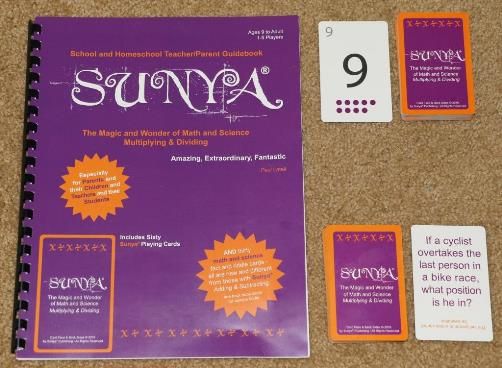
To play, I laid out a number sentence, dealt out four cards per player, and challenged my son to lay down some of his cards atop the ones in the number sentence to make a new, correct number sentence. Then, I did the same. If we could not make a number sentence, we drew more cards from a pile, and, when one of us was out of cards, we called, "Sunya" (pronounced soon-ya) and won the game.

At that point, the winner drew a card from the Riddle and Fact deck to read aloud.
Not too hard at all. In fact, the Basic Game was satisfyingly simple to catch onto once my children and I gave it a go, and quite fun with just enough challenge for at least one of my children.
The Children's Takes on the Game
Math may be universal, but opinions never are, right? That is a fact that my children prove. The two children of mine who played Sunya with me each had a different take on it.
My oldest, ten, liked Sunya"okay", but only played the game when I required him to as a part of lessons, since the game just did not capture him. When I asked him for his honest opinion about Sunya, he said:
I think it's a little bit boring. I do not really like math games and stuff as much as other things, so I just don't like Sunya much... It was okay, but not the best... It is a better way of practicing multiplication than some other ways, but not my favorite. I liked the Riddle and Fact cards better than the game.
My daughter, who is actually weaker with her multiplication facts than her big brother had a different - and more positive- opinion of Sunya. Whenever she saw her brother and I playing Sunya, she watched and asked if she could play. Then, she delighted in the game.
When I asked my daughter for her candid opinion about the game, she said:
I like saying "Soon-YAAAAA!" It is fun and it is a good game. It is easy, but not too easy. It's a certain amount of hard, which makes it FUN! I want to play it more.
So, that's exactly what we did. After my daughter gave her opinion about Sunya, we played it again.
We will continue to do so regularly as long as the game interests her, because, to me, any game that gets my daughter smiling over math and encourages us to spend 1:1 time together is a worthwhile way to spend our time!
Perhaps, my daughter and I will even get to the point where we can get beyond the Basic Game and utilize some of the other variations of play that are included in the guidebook, which include a division game, a team game, and a solitaire game.
Extra Information
Besides lengthy game instructions for different versions of Sunya play, the teacher's guide includes:
- a description of the meaning of the game's name (Sunya), which also described the origin of our modern number system, discussed math as a universal language, touched on cultural diversity, and got into how math knows no races, or geographic boundaries.
- a glossary of terms used for division and multiplication problems, which was simple and might prove helpful for those who cannot recall, say, what a mutliplicand and a multiplier are.
- an explanation of the parts of a number sentence, which could be helpful to some.
- a page of math quotes from Euripides to Einstein, which could be used for copywork or just for trivia or conversation.
- 5 pages of Math and Science Facts and Riddles which are redundant to the cards that came with the game.
- a page with some extra math facts and riddles
Since I know the final version of the game and its manual are not being sold quite yet, I will say that I do not think all of these extras add that much value to the game package and could easily be included on the company's website with a simple link to them included in briefer, less complicated guidebook that could make the game appear more "open and play" for customers. In fact, perhaps money saved in production by transferring the extras above to a website page could go towards including images of cards on full-color instruction pages which would make actual game play easier to understand.

Likewise, in a later version of the game, I think it would be helpful to have different backs for the cards that are Playing Cards and those that are Fact and Riddle Cards. (Sometimes, we found ourselves accidentally drawing from the wrong pile or shuffling them together.) Likewise, I would like to see more riddles, math challenges, or story problems among the Fact and Riddle Cards, which, in my opinion, are not necessary for the game, but do add another layer of fun and learning, which my son appreciated.
Final Thoughts
I give credit to Paul Latell, inventor of Sunya, for his efforts in creating this game and getting it so close to being ready for market! While I obviously think Sunya's presentation could benefit from a few tweaks, overall, I find the actual game interesting and worthwhile.
Sure, Sunya may not be a huge hit with my son, but I appreciate how, when I request that my son play it with me, I witness him practicing his math facts and stretching his thinking. Better still, my daughter, thoroughly enjoys the Basic Version of Sunya and asks me to play with with her. That makes the game a win, tweaks to it requested or not.
If you have children that need practice with multiplication and division and enjoy playing math-based card games, Sunya could could be for you. Watch for the version of it that will be on the market soon.
Also, watch for its companion game, an addition and subtraction version, which will be available soon as well.
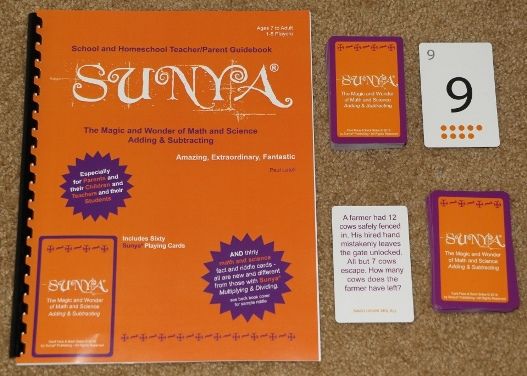 I imagine it is not easy to get a game from concept to pilot testing to market these days, and it is clear that game inventor Paul Patell has done due diligence so far with this process, playing and testing the game with an elementary school classroom (which is mentioned in the Teacher/Parent Guidebook) and generously offering a pilot version of either Sunya - The Magic and Wonder of Math and Science Adding & Subtracting or Sunya - The Magic and Wonder of Math and Science Multiplying & Dividing to 100 Schoolhouse Review Crew familes. In doing so, I believe Me. Latell has proven that Sunya is educational for many (my son included) and enjoyable, too (for my daughter and I, for example). I encourage you to keep an eye our for versions of Sunya coming to market soon as well as to see what other families who have played pilot versions think about the game.
I imagine it is not easy to get a game from concept to pilot testing to market these days, and it is clear that game inventor Paul Patell has done due diligence so far with this process, playing and testing the game with an elementary school classroom (which is mentioned in the Teacher/Parent Guidebook) and generously offering a pilot version of either Sunya - The Magic and Wonder of Math and Science Adding & Subtracting or Sunya - The Magic and Wonder of Math and Science Multiplying & Dividing to 100 Schoolhouse Review Crew familes. In doing so, I believe Me. Latell has proven that Sunya is educational for many (my son included) and enjoyable, too (for my daughter and I, for example). I encourage you to keep an eye our for versions of Sunya coming to market soon as well as to see what other families who have played pilot versions think about the game.
 Are you looking for 1:1 or small group games to enjoy math fact fun? Sunya may be one to consider.
Are you looking for 1:1 or small group games to enjoy math fact fun? Sunya may be one to consider.



























